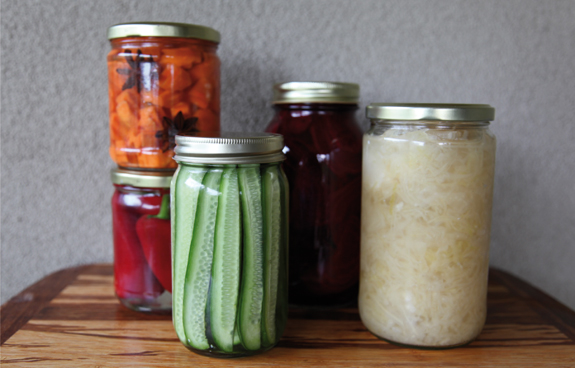Healthy Eating: Join the community of fermentistas and get on board with fermented food trends and their positive health benefits
Hans Wieland
Ok, I confess: “I am addicted to fermentation!” You might have guessed as much from reading my articles on sourdough, sauerkraut and cheese, but here is my full blown and unreserved confession: “I simply cannot live without fermentation!”
And while I can abstain from the aforementioned foods, my obsession with kefir is such that I will bring the live cultures on extended travels or holidays to feed the habit and avoid withdrawal symptoms.
So, not only am I a Cloudista and Dylanista, I am also a Fermentista- or member of “the community of fermentos”. (Michael Pollan)
Fermented foods seem to be one of the new food trends, but there is strong evidence that people were fermenting beverages in Babylon circa 3000 BC, and “most food and fermentation processes are ancient rituals that humans have been performing since before the dawn of history”. (Katz, The Art of Fermentation)
One of the major benefits of fermentation is the preserving and storing of food without the need for refrigeration. The health benefits of probiotic cultures as a result of fermentation are widely lauded and many people love the flavour of these foods.
Make Kefir
– adopt a live culture for life
One of the simplest and easiest ways to become a fermentista is the fermenting of milk with kefir grains. Kefir, as a living culture, is a complex symbiosis of more than 30 microorganisms, mainly lactic acid bacteria and yeasts. Kefir can help to restore the intestinal flora of people who are recovering from a serious illness or being treated with antibiotics. It is a remedy for digestive troubles and, because the milk is fermented, tolerable to those people who are lactose intolerant. Kefir contains folic acid, calcium, iron, iodine and is full of Vitamins A, B1, B2, B6 and D.
Fermentistas call it the “champagne of milks”, because of its alcohol content, that can be as high as 3 percent. At home, we produce around ¾ of a litre each day and use it as a pro-biotic drink. It is extremely easy to make (see instructions) as it requires no temperature control and everybody can make it at room temperature in the kitchen. During the fermentation process (converting lactose into lactic acid) the kefir grains multiply and begin an endlessly self-propagating process.
This is where the community building aspect of the kefir production, in particular, and the fermentation process, in general, kicks in. As part of our “One World Project” at The Organic Centre, linking community gardens in the North West of Ireland with community gardens in other parts of the world, we inadvertently (well, we knew it would happen) started a Kefir society, enabling participants to produce their own bubbly stuff and, after a while, pass on some kefir grains to friends and neighbours. This is a very empowering process, as sharing your own ferments with others takes you out of the cash economy. Of course, we share all this with the unseen community of fungi and bacteria all around us.
How to make Milk Kefir
1. Put your grains into a clean glass bottle or jar (1ltr is best)
2. Fill the container with milk (any organic milk will do) 2/3 full
3. Place in cupboard or other spot in the kitchen out of direct sunlight
4. Cover jar with clean muslin
5. Let it sit for 24 hours or until it reaches sourness to your taste
6. When kefir is finished, strain grains (with a plastic strainer, NO METAL) from kefir milk.
7. Drink kefir, reuse grains. Go back to step 1.
Are you still wondering how I travel with my kefir grains…?
Pick up a copy of print copy Positive Life Magazine in your local health food store or subscribe here to have the magazine delivered to your door for €15 a year. Never again miss an opportunity to learn more about how to be happy while sitting on your couch at home.
- Essential reading: SandorEllix Katz – The Art of Fermentation
- Source of grains: Hans Wieland, Neantog, Cliffoney, Co. Sligo
- Course: Fermented and Cultured Foods, April 7th 2013 at The Organic Centre
www.theorganiccentre.ie
Read more great healthy recipe ideas.



